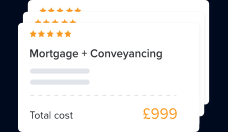
With low interest rates, low savings rates and a stock market that is still very volatile, buy-to-let is still an attractive investment vehicle. Done the right way, it will be straightforward to maximise the returns on your cash, plus people will always need somewhere to live, so it is not as if purchase will ever go to waste.
Do Your Research
Investigate the market thoroughly. Think about house prices and areas where people want to live and where value could increase. When looking at house prices, consider adding value with renovations or an extension, and choose a promising area that has transport links, shops and schools. These factors will be important when it comes to getting a mortgage and eventually letting the property.
Do the Sums
Having looked at house prices in an area with potential, write down the cost of properties you are considering and the rent you are likely to get. Lenders offering buy-to-let mortgages generally want rental that will cover 125 per cent of the mortgage payments. You will also need to have savings to cover a 25 per cent deposit and the mortgage arrangement fee. Make allowances for maintenance, agent's fees, stamp duty and the property sitting empty between rentals.
If you are new to these kinds of calculations, it may be useful to think about property prices in terms of their yield, that is the rent received annually as a percentage of what you paid for it.
The Right Mortgage
Armed with your property prices and the calculations on investment returns, start shopping around for mortgages. It will really pay off to look around here, as interest rates vary, arrangement fees vary, conditions vary. Examine all kinds of lenders and check their websites, ask about deals or promotions - not all mortgages are created equal, and a good choice could save you thousands of pounds. Use a buy-to-let mortgage calculator to work out the base amount that needs to be covered each month.
Many buy-to-let mortgages are set up only to pay off the interest, and the capital borrowed will not be paid off. However just paying the interest means these payments are easy to offset against your tax bill. Your accountant may have some good advice on this. Rental returns in surplus to the property's costs can be used for another investment.
Negotiate
The buy-to-let purchaser has a similar advantage to the first-time buyer, as you are not part of a chain or depending on selling another property. Thus, you represent a lesser risk, and this can be helpful in getting a good price. Again, research will help here. If you find out sold property prices in the area, and whether the market is heating up or cooling down, this will provide ammunition for negotiations.




Make a comment